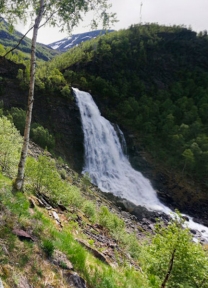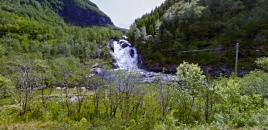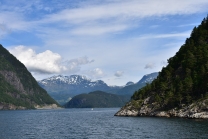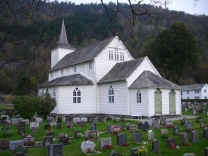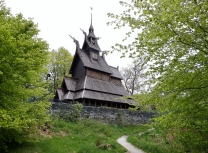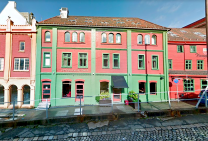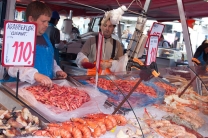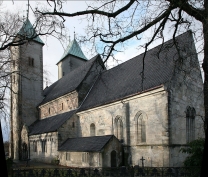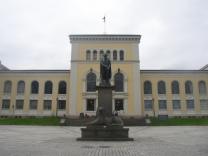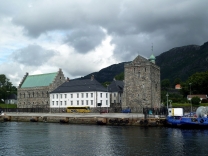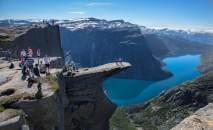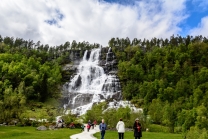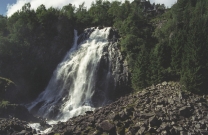
Steinsdalsfossen
Steinsdalsfossen (also called Øvsthusfossen or Øfsthusfossen) is a waterfall in the village of Steine in the municipality of Kvam in Hordaland county, Norway. The waterfall is located about 2 kilometres (1.2 mi) west of the large village of Norheimsund which sits along the Hardangerfjorden.
The waterfall is one of the most visited tourist sites in Norway. From the parking lot, the path goes along the waterfall, up a hill, and behind it where visitors can walk dryshod "into" the rumbling water. Steinsdalsfossen is 46 metres (151 ft) high, with a main drop of 20 metres (66 ft), and has the greatest volume when the snow melts in May and June. Steinsdalsfossen is part of the Fosselva river that comes from the water of the lake Myklavatnet, located 814 metres (2,671 ft) above sea level in the mountains above the waterfall.
History
The waterfall was formed in 1699 when the river found a new race.
The Emperor Wilhelm II of Germany visited Steinsdalsfossen every summer (apart from two years) from 1889 until the start of World War I in 1914.
At Expo 2000 (in Hannover, Germany) Norway was represented with an installation by Marianne Heske of which a 15-metre (49 ft) tall copy of Steinsdalsfossen was an important part.









